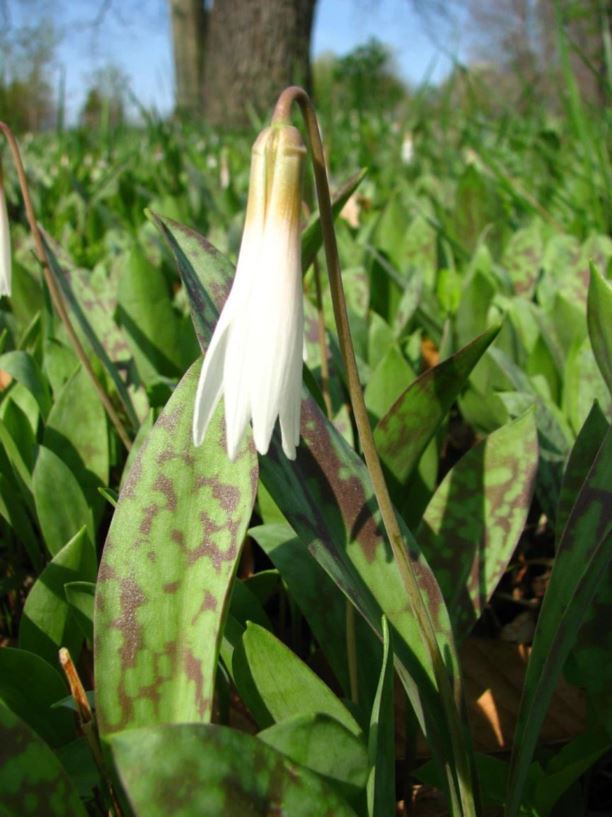

The leaves are pale green and mottled with purplish-brown. Erythronium albidum, the white fawnlily or white trout lily, is a small herbaceous geophyte in the lily family.

A shade or partial shade garden, with available moisture and rich soil, would be a good location. The bloom grows on a stalk, with one or more leaves at its base. It prefers moist, humusy soils and can grow in a variety of garden areas supporting a more acid soil. Trout lily is not a fast-spreading bulb don’t expect it to naturalize wantonly. Some of our favorites varieties include lemony ‘Pagoda’ (which grows to 18 inches, a towering height for a trout lily) and Erythronium californicum ‘White Beauty’, with a pink tinge at the tips of its petals. This perennial wildflower that is a corm is an early spring bloomer that goes dormant in late spring. Depending on the species and cultivar, trout lilies are hardy in USDA growing zones 3 to 9. If that is not co-evolution at its finest! While Trout lilies have specialized pollinators associated with them, several different pollinators will also visit, including other native bees and many species of flies.Phonetic Spelling er-ih-THROH-nee-um a-mer-ih-KAY-num Description The species name of this bee, erythronii, refers to the genus of trout lily, Erythronium. “Oligolectic” means this bee has a narrow, specialized pollen preference, typically for the pollen of a single genus of plant. Specific to Trout lilies and their relationship to bees, trout lilies are visited by an oligolectic bee ( Andrena erythronii). And, it is an important food source for Queen Bees who are in desperate need of pollen for food in the very early spring. The flower is a food source to our wildlife like the deer who takes a liking towards their basal leaves. First, they are considered important to the woodland community because the large colonies they form serve as a stabilizer for the forest floor.

Trout lilies play an important role in our ecosystem. Trout lilies flower from April through May and when they do, they create stunning drifts of white throughout our woodlands and fields. They primarily spread through underground rhizomes forming large colonies or clumps of plants. Trout lilies may be found statewide in Illinois. The common name, Trout Lily, is derived from the mottled leaves that some think resembles the markings on a trout. Trout lilies ( Erythronium albidum) are often called “dog-tooth violets” which is a bit perplexing as this plant is a member of the lily family, having no relationship to violets.


 0 kommentar(er)
0 kommentar(er)
